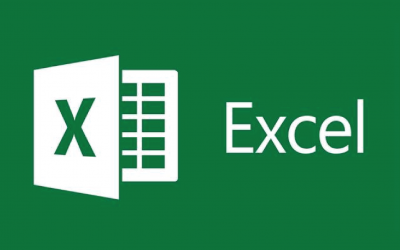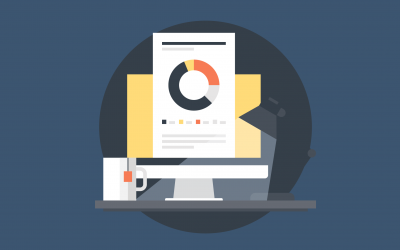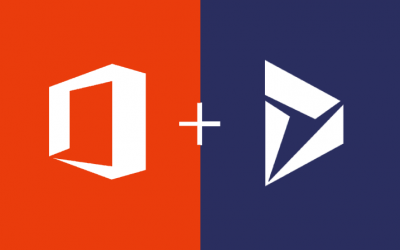No Results Found
The page you requested could not be found. Try refining your search, or use the navigation above to locate the post.

But the pressure isn’t just on contact centres. Cost cutting has meant field service agents need to see more customers per day. Project teams need to shorten the project length – with less and less personnel.
What’s needed is an intelligent, comprehensive solution. One that can increase efficiencies in the whole service division. It needs to be flexible enough to allow customers to find answers themselves, receive assistance remotely, or arrange for service personnel to come on site. And it needs to manage the process from first engagement right through to completion.
Welcome to Microsoft Dynamics 365 for Customer Service.
It’s a comprehensive way of managing every service interaction. With its incorporation of machine learning, intelligent analytics, and the Internet of Things, it will enable you to stay ahead of the competition: saving money and increasing your up-sells and cross-sells. All the while, you can ensure your staff give a consistently great experience to every customer.
Have a look at what Dynamics 365 for Customer Service could do for your company:
Not only does this enable customers to engage with you in the way they prefer, it also reduces your costs. With more people finding their own answers and logging their own service cases, you’ll need less customer service personnel.
Field Service: Dynamics 365 for Field Service is Dynamics 365’s complete field service management business app. It’s incredible. Once you have it, you’ll wonder why you ever settled for anything else. Read all about it here.
Project Service: Working alongside project management software, Dynamics 365 for Project Service Automation can manage your project costings, ensuring that your projects complete on time and on budget, and at a profit.
So, whatever your service needs, let us see how we can help you. Contact our team now…
The page you requested could not be found. Try refining your search, or use the navigation above to locate the post.
Discover More Stories

A refreshing new approach.
Unlike traditional system deployments, we’ll get your team up and running on CRM very quickly. We know that time is money. The longer a deployment takes, the longer for you to experience its benefits and get a return on your investment.
How quickly can we implement a solution? It depends on the complexity of your requirements. Simple set-ups take a single week. More complex projects: 4 weeks.

1. Our Solutions are Cloud-Based.
As well as faster deployment, we like cloud CRM because it is the securer option for your data. You can read all the reasons why we opted for cloud here.
2. Our Implementation Processes are Streamlined.
Our team have completed 100s of projects. This has enabled us to templatise a lot of the process. This doesn’t hinder us from tailoring a solution to your requirements, it just makes the tailoring process faster.
Another way we are streamlined is through carrying out early customer validation. In more traditional deployments, you’d agree on what you want up front. But the next time you gave input would be when the final product was presented to you. In our experience this only means one thing: extended project deadlines. In contrast, receiving regular customer input is the best way to ensure the project finishes on time.
On larger projects, we ensure on-going customer validation by using an agile methodology called Scrum. Scrum was developed to streamline software creation and we have adapted it for our CRM installations. It’s a process that ensures your involvement at every stage. This is extremely useful, because it allow for changes to be made during the install.
With complex deployments, customers only fully know what they need once they have seen a functioning version of the system. Scrum understands this and plans for it. When you opt to go for a CRM solution with us, it’ll be a process you’ll enjoy.
Want to see if CRM would be beneficial for you? Have a look at the business case for CRM.
The page you requested could not be found. Try refining your search, or use the navigation above to locate the post.

1985 was a big year.
Madonna and Wham! were topping the charts with their songs: ‘Like a Virgin’ and ‘Wake me up before you go-go’. Ronald Reagan was being sworn in for a second term. And Microsoft launched Excel.
Excel transformed businesses. Accountants crunched numbers and sales managers tracked their deals. It was a game changer.
“30 years later, the world’s a different place. Excel is still a great tool – just not for sales managers.”
Here’s why:
1. No single, reliable source of data
Deal information is spread everywhere making accurate forecasting almost impossible. Collaboration on complex opportunities or tenders is frustrating. And different versions of sales proposal documents are stored in multiple places. Vital information can easily be lost, but it becomes impossible to know when or where.
2. Reporting is painful and takes too long
Sales reps should be maximising selling time. Instead, they are wasting hours trying to update shared spreadsheets and collate data from different sources. Usually just before the sales meeting. That means it’s nearly impossible to have truly actionable insights.
3. Limited visibility of sales activity
Adding info to the “comments” column in Excel doesn’t reflect the true history of sales activity related to the deal. When was the last meeting? What emails have been exchanged? Are there outstanding tasks? What makes it worse is that there are no reminders for follow-up activities in the future.
4. Information isn’t mobile
No access to important customer information while on the go. Getting access to your customer’s important information right from your mobile device is painful when it lives in a shared spreadsheet. We’ve all tried accessing shared spreadsheets from a mobile device, it isn’t fun!
5. Sharing isn’t caring
Scaling a shared spreadsheet across a team creates nothing but frustration. Online and offline versions, failed attempts to save new information and corrupt files when trying to save are par for the course with shared spreadsheets.
6. Every customer is treated the same
Not all customers are created equal. Without previous purchase history on hand, prioritising deals according to their likelihood to convert isn’t possible. That means all customers and deals are treated the same, and they shouldn’t be. Spend time on the customers or prospects that really matter.
Are you stuck on Excel? Here’s how to drop the spreadsheets in 2016:
After the Microsoft Office revolution, the next revolution was CRM (Customer Relationship Management).
CRM give you secure access to a single version of the truth. With all your important customer data in one place, reports are delivered in real-time and the insights gained are instantly actionable. All activities such as email, appointments, calls and follow-up tasks can be tracked against a customer record. Keeping a comprehensive history in one place. This information is available on the go via any mobile device which means you have access to the info you need, when you need it.
Since it’s designed to scale from small teams up to tens of thousands of users, your whole team can work in CRM without anyone being locked out.
Best of all, customers can be profiled to ensure your people work on the most important deals first.
It’s simpler than you think. See it in action now:
At The CRM Team, we’re experts at streamlining your sales process.
Request a demo today. We’ll import a sample of your data and show you a different way of selling.
The page you requested could not be found. Try refining your search, or use the navigation above to locate the post.
Discover More Stories

The stats from 362 companies












The headline numbers above are average increases reported for each department. Much bigger increases are possible with full interdepartmental CRM co-ordination – something we call operational/analytical CRM.
If you do a CRM installation with us, we can get you to this operational/analytical level. It’s not something you can achieve overnight, but letting us help you makes the whole process a lot quicker. It’s something definitely worth doing. Nucleus Research estimates this unlocks a whopping four-fold increase on the benefits above.
Want the full Nucleus report? Click here
The page you requested could not be found. Try refining your search, or use the navigation above to locate the post.

Every month, more than 85 million people are more productive thanks to Microsoft Office 365. Users can work from anywhere, at any time and across any device.
Add Microsoft Dynamics 365 to your Office 365 subscription and transform the way you work with customers.
Let’s take a look at how Dynamics 365 and Office 365 work together.

Outlook & Dynamics 365
Create new Dynamics 365 records in Outlook. Never fail to track email leads again. Click one button and the email sender becomes a record in Dynamics 365. You can also bulk create records from any of your Outlook contacts.
Quick create customer tasks. Create activity lists in response to emails. Simply drag emails that need actioning into Outlook Tasks. These are automatically scheduled as tasks in Dynamics 365 and added to the customer record.
See important account info in Outlook. View account info next to the message. Dynamics 365 draws sales activities, cases and opportunity information about the account and places it next to the relevant mail.
Log your sales activities from within Outlook Calendar. With a single click from within Outlook Calendar, track meetings and customer appointments. Managers get an update on these activities without the sales rep having to log in to Dynamics 365.
Mobile. Take notes on the move. Dynamics 365 will connect these to the customer record.
Connect Excel to Dynamics 365 data at the touch of a button. If you prefer seeing reporting data within excel, Dynamics 365 will link with whatever reports you produce. The data in Excel remains linked to Dynamics 365, so your reports update dynamically. And because the data is drawn from Dynamics 365, user security roles are maintained. If the excel doc contains some data above your security clearance, that part of the data will be hidden on the spreadsheet.
Create custom dashboards. Set up all your key metrics in one window. Import datasets from Dynamics 365 with a few clicks, using the pre-built content packs. It’s never been easier to see the data you need, all in one place, on any device.
See calendars and shared docs from within Dynamics 365. Your company SharePoint accounts automatically get imported to Dynamics 365, making integration easy and seamless.
Smart collaboration on proposals. Source customer data from Dynamics 365 and those documents automatically get attached to the customer record.
Instant follow up. Conduct webinars or whiteboard discussions with Skype for Business and then immediately send a record of the event to participants. Dynamics 365 will track who received it, and add it to their customer record.
The page you requested could not be found. Try refining your search, or use the navigation above to locate the post.
Discover More Stories
Recent Comments